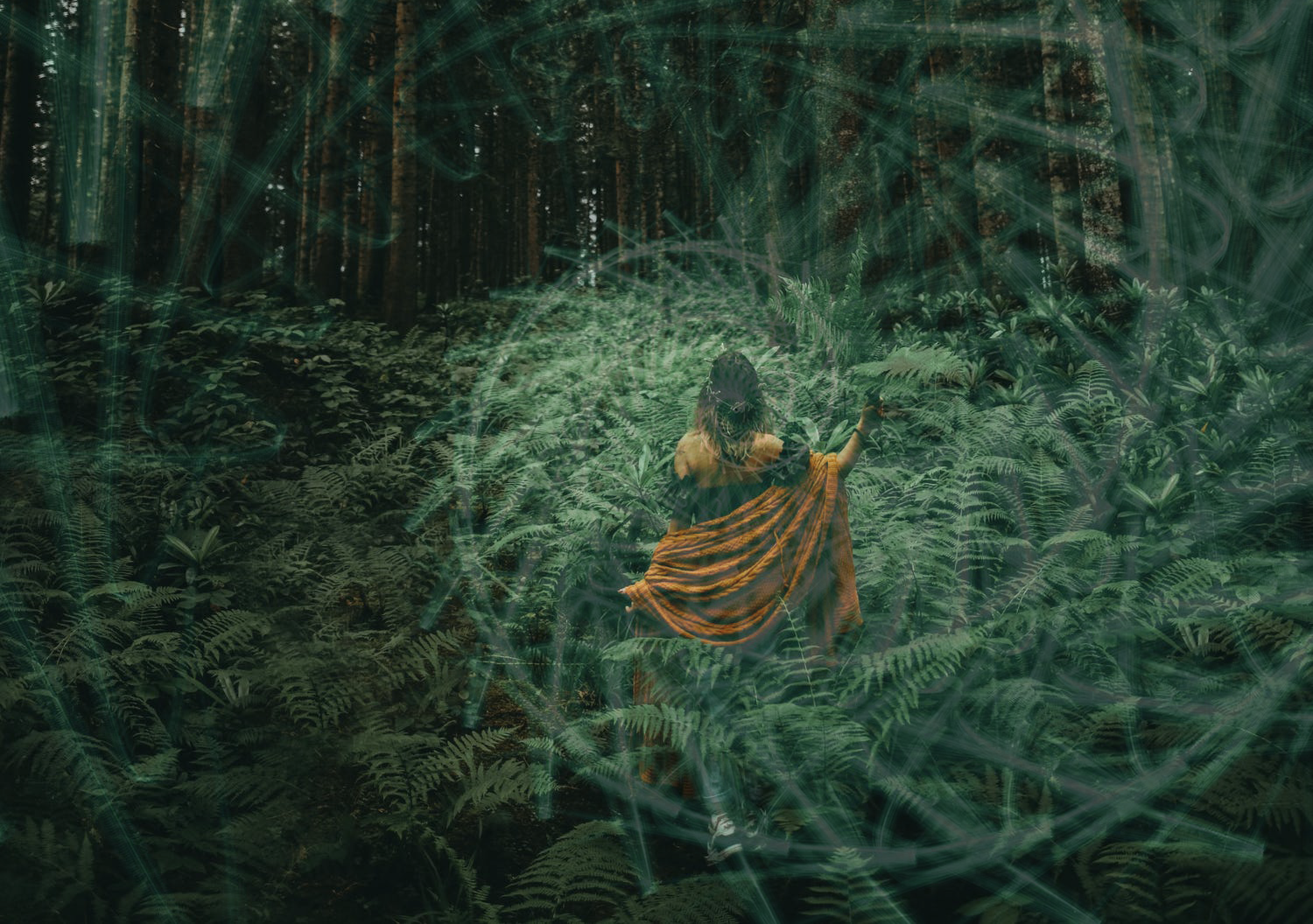Cannabis Consciousness, Alternative Healing, and the Medicine of Psychoactivity
By Sarah Russo, Creative Director of the SCC
Many people are turning to plant medicine to help them heal, especially in our current times. We are inhabiting a world with booming interest in cannabis and also a simultaneous need to find alternatives to our current healthcare system. The healing potential of the cannabis plant is incredibly vast. But how can we integrate it into the healthcare sphere in a respectful and meaningful way?
In an effort to holistically examine cannabis in alignment with other healing medicines and modalities, I had a conversation with Dustin Sulak, DO about cannabis consciousness, plant ritual and its healing potential, the benefits of psychoactivity, and other entheogenic allies for our current times. Dr. Sulak is an internationally-renowned expert in medical cannabis and the founder of Integr8 Health and Healer. He is on the board of directors of the Society of Cannabis Clinicians and also recently published the Handbook of Cannabis for Clinicians: Principles and Practice.
Sarah Russo: In your SCC module Cannabis for Health Promotion & Disease Prevention, you stated that the psychoactivity of cannabis can provide some of the most powerful therapeutic effects of the plant, even though its offerings are so diverse. Can you elaborate on how psychoactivity specifically can support health and wellbeing?
Dustin Sulak, DO: In a lot of cases, people come to cannabis because they are suffering and want relief. It’s good at doing that in many different ways. Pain, anxiety, nausea, and vomiting are some examples. There are many symptoms from which people want a break, and cannabis can provide that break. That’s where people tend to get started with cannabis.
In my experience, very often symptoms are a message from our health to our conscious awareness to change something about our lives. If we’re depressed and anxious, it might mean it’s time to quit that job that we hate and find something more inspiring. Or maybe it’s because there’s old trauma that’s reemerging in our current relationships. There are sometimes reasons for the symptoms. The symptoms themselves are the expression of the healing system trying to remediate or repattern our lives. Sometimes this healing process can’t fully express itself and the symptoms persist.
There’s the cycle of illness and wellness that we tend to go through in our lives. Health includes both. The illness is an opportunity for us to evolve and to change our patterns of thought, behavior, or physiology in response to our ever-changing environment. If we simply suppress symptoms and don’t do any of the transformational work, we tend not to experience what I think most people would consider healing.

It’s really nice for people to get a break. Symptoms can be overwhelming. People can be stuck in their situation with their function limited by the symptoms. Symptom relief that allows a person to look through the window of what life might be like if they didn’t have a condition anymore is extremely valuable. Sometimes, with an optimal cannabis regimen, the ailment becomes a shadow of what it used to be, still present but no longer at the level where it’s limiting a patient’s life.
Based on my experience of over 12 years in the clinic, when I observe cannabis stimulating a more transformational healing, it’s not usually just related to the symptom-relieving effects. It’s the psychoactive effects. It’s when people step into a different, non-ordinary state of consciousness with cannabis and gain a different perspective.
They may recognize a creative solution to a problem that’s been troubling them for so long. Or they opened up in a new way of being in their relationship or with intimacy. Or they had the comfort and the courage to go into a terrifying place from their past, look it in the eye, deal with it, and come out the other side. This is transformational healing.
Cannabis is a living medicine. There is a dynamic relationship that people have with cannabis over time. People can start with symptom relief. But they can step into how cannabis can alter their consciousness to help them become more themselves, centered, and whole. That’s where healing becomes profound. That’s why I say that the most powerful therapeutic effects are often the psychoactive effects.
SR: Do you feel like the different nuances of altered consciousness or using other tools in order to achieve psychoactivity can open you up to unique parts of healing?
DS: Yes, absolutely. As we go through life, we experience hurt and trauma. It doesn’t have to look like a trauma from the outside. What really matters is how it feels on the inside from the perspective of the person who’s experiencing it. Whether it’s a physical, mental, emotional, or spiritual trauma, these tend to partially dissociate us from parts of ourselves. There’s a process of selectively perceiving things that are threatening to us. This is adaptive. Throughout our day, there’s more perceptual input coming in than we can pay attention to. Eventually we have to build these filters to pay attention to certain things and ignore other things. Those filters are flavored by our past hurts and traumas. As they accumulate, people can get into a narrow range of emotions, communication, and thinking patterns. They may have a hard time experiencing gratitude and appreciation because those filters have drastically shifted towards perceiving things that are threatening, for the purpose of survival. And that’s just one example.
The same thing happens with pain. If somebody has chronic pain, even if it’s not trauma-related, there’s a tendency to withdraw one’s awareness from the part of the body that’s hurting. While that can provide short-term relief to some extent, then there is a part of the body that they are dissociated from. It’s not benefiting from their love, care, touch, or attention. In my opinion, our attention is an important part of our self-healing mechanisms.
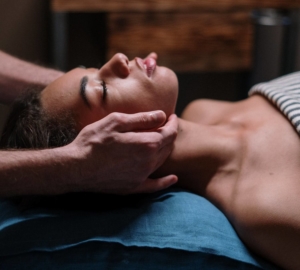 As we recognize these dissociated aspects of self, or these really narrow or inflexible aspects of our mind and emotions, we can invite these parts of ourselves back into the whole. Then healing can happen way more efficiently. This is what I’ve observed in conversations with patients, and also via palpation. As an osteopath, I frequently have people on my treatment table. I see that when they are stuck in one pattern of consciousness, their body feels different. As they let some of that go and become more whole, the tissues and inherent motion in the tissues literally feels different. In a state of wholeness, the inherent self-corrective mechanisms that are always present in the body can function so much more efficiently. The healing system tends to be able to finish what it’s doing because it’s not segregated to one small aspect of self– it gets to work at the level of the whole. I think that cannabis can bring people into a state of wholeness, especially if we intentionally invoke that aspect of it.
As we recognize these dissociated aspects of self, or these really narrow or inflexible aspects of our mind and emotions, we can invite these parts of ourselves back into the whole. Then healing can happen way more efficiently. This is what I’ve observed in conversations with patients, and also via palpation. As an osteopath, I frequently have people on my treatment table. I see that when they are stuck in one pattern of consciousness, their body feels different. As they let some of that go and become more whole, the tissues and inherent motion in the tissues literally feels different. In a state of wholeness, the inherent self-corrective mechanisms that are always present in the body can function so much more efficiently. The healing system tends to be able to finish what it’s doing because it’s not segregated to one small aspect of self– it gets to work at the level of the whole. I think that cannabis can bring people into a state of wholeness, especially if we intentionally invoke that aspect of it.
SR: In regards to wholeness and cannabis, it’s been going on for a while, but we see “CBD-only” legislation and CBD isolate products being very common in the marketplace. Usually THC is demonized as a result. What’s your response to this?
DS: I trust the wisdom of cannabis and how it’s spreading out into society. I think that CBD is a safe place for people to start. It’s done so much for cannabis liberation for people to know that there is a safe, non-impairing aspect of the plant. Yes, we are still seeing a lot of “CBD is the medical part” and “THC is the recreational part” which is completely false. Either one of them can be medical or therapeutic. Of course, recreation itself is something that’s therapeutic. When people say “recreational”, they are usually referring to the euphoric effects. The term euphoria basically means experiencing a state of wellbeing despite being sick or having an illness. Euphoria is something I think is extraordinarily therapeutic.
Then there’s the social aspects of cannabis, like building stronger social relationships or being more open or vulnerable during conversations or intimacy. These are not just for fun. On the contrary, these are more of the transformational aspects of the medicine. People pivot in their lives and start relating to themselves and the people around them differently.
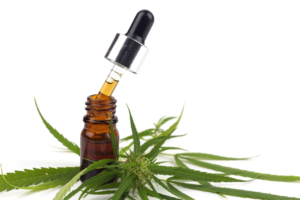 THC is incredibly therapeutic. We’ve obviously known this for hundreds or thousands of years. That’s not going away, but I’m okay with these baby steps in cannabis liberation, even though a lot of times they don’t make sense. For example, for a place to say people can use CBD but not THC – to me this sounds ridiculous. But I think it has a place. So I don’t want to fight against those policies. I want to build upon them and continue to recognize that CBD-only legislation and products are just an on-ramp for people to cannabis. I hope that they are able to continue on that ramp to the main highway which has THC flowing through it!
THC is incredibly therapeutic. We’ve obviously known this for hundreds or thousands of years. That’s not going away, but I’m okay with these baby steps in cannabis liberation, even though a lot of times they don’t make sense. For example, for a place to say people can use CBD but not THC – to me this sounds ridiculous. But I think it has a place. So I don’t want to fight against those policies. I want to build upon them and continue to recognize that CBD-only legislation and products are just an on-ramp for people to cannabis. I hope that they are able to continue on that ramp to the main highway which has THC flowing through it!
SR: What other options besides cannabis can be incorporated into someone’s lifestyle to further support their health?
DS: I have found cannabis to be a very powerful adjunct to non-pharmacological treatments. Exercise and yoga are great examples. Based on my own personal experience and patent reports, cannabis can allow us to go deeper into a yoga practice. It relaxes our muscles and helps with pain. Importantly, it doesn’t take the pain away, but it makes it more tolerable. A lot of times, healing leads us through a process that’s uncomfortable, such as psychological and physical pain. I think Hatha Yoga is a great example. It’s a metaphor for many other types of healing. When you’re deep in a stretch and trying to breathe into it, it can hurt. A lot of people will have a spontaneous mental dissociation from the pain they are experiencing. They will escape from that and then two minutes later they realize they didn’t finish the stretch. Maybe they didn’t go as deep into it as they could have because they were bringing something up physically, mentally, or emotionally. These are not separate. I often say the subconscious mind is the body. It’s not the brain. Every tiny capillary in the body has a nerve associated with it. This nervous system is everywhere. That is the subconscious mind.
![]()
 Cannabis is a great adjunct to things that we know are healthy, like exercise, meditation, and therapy. There are emerging trends in the world of psychotherapy that are recognizing that cannabis and other psychoactive substances can be an incredible adjunct to make the therapeutic process more powerful. They can help promote change faster or maybe make it easier for the client.
Cannabis is a great adjunct to things that we know are healthy, like exercise, meditation, and therapy. There are emerging trends in the world of psychotherapy that are recognizing that cannabis and other psychoactive substances can be an incredible adjunct to make the therapeutic process more powerful. They can help promote change faster or maybe make it easier for the client.
There are also lessons cannabis has clued us into about the endocannabinoid system. Even if you’re not using cannabis or you don’t have access to it, the basic understanding of how it works has given us important insight into what we can do to promote health. This can include avoiding the toxins, pesticides, and chemicals in our food that disrupt the endocannabinoid system. Many of my favorite health promoting practices are directly linked to the ECS. I didn’t choose them because they were linked to the ECS. I choose them because I find them to be extremely time and energy efficient ways to promote health, prevent disease, and relieve suffering and symptoms. And it turns out they all are linked to the ECS.
Fasting is an important one. I typically fast one day a week for about 36 hours. I have no calories, caffeine, or cannabis during that time period. I savor the breaking of the fast in a gentle way. It’s one of the moments each week that I look forward to the most. It has enhanced my appreciation, pleasure, and makes me feel more energetic. I’m able to do a vigorous workout before I break the fast. If you look at what’s happening in the endocannabinoid system, the fasting itself is associated with elevated levels of anandamide. They are going up slowly as we’re fasting. At first it may feel like a hunger response, but much later it feels like resilience. Anandamide can create a gentle euphoria, or if not quite that intense, certainly a positive mood and a feeling of strength and resilience.
Another modality I love is extreme temperature exposure, in particular cold. Cold water therapy (ice bathing) is incredibly powerful. When we get cold, we have a strong sympathetic response where a lot of norepinephrine is released into the peripheral tissues. This can create shivering which generates heat. It can also brown the white fat in the body which turns fat from a storage organ into an energy using, heat producing organ. That’s what the sympathetic norepinephrine system is doing. Anandamide is the messenger for the peripheral tissues to give feedback to that autonomic nervous system. It gives the signal to the sympathetic nerve terminals that it has enough norepinephrine, the signal has been received, and it can stop. Meanwhile, you get this big release of anandamide, which circulates. After cold exposure therapy I experience feelings of strength, resilience, self-efficacy, and capability can make me feel like you can do anything. Those are some examples of things that I’ve learned about from cannabis and how it led me through my understanding of the endocannabinoid system. Exercise, meditation, fasting, and cold bathing are great places to start.
SR: For clinicians, how can cannabis be best integrated into the holistic medicine field, rather than being just an add on to any typical healthcare practice?
DS: I think as an add-on to medical practice, it tends to draw practitioners into the world of individualized medicine. It’s easy to get very comfortable saying, “You’ve got hypertension, we’re going to start with hydrochlorothiazide” or whatever it might be. These kinds of algorithms make medicine really boring. They do work at some surface level. But anyone in the clinic knows that they don’t work all the time. When they don’t work, you dig and figure out what you can do to create a more individualized solution for the patient. Or you let them know you can’t help them or refer them to somebody else. I think digging is more exciting and satisfying.
There’s a lot of burnout in the medical field due in the way the system is organized right now. Sometimes people don’t really see that there’s time or opportunity to go deeper. When they start using cannabis as a therapeutic tool, there’s a combination of incredible efficacy where everything else has failed. So that gets clinicians excited. Then there’s the recognition that cannabis is such a versatile tool. It’s really not just one tool, it’s many.
With some methodical approaches to individualizing the treatment, we can be in partnership with the patient to figure out a way to use cannabis that’s all upside, with little or zero negative side effects. And usually there’s some positive side effects. This typically requires a month or two of back and forth with the patient. If one thing doesn’t work, try another. But this partnership and individualization is pretty different than standard allopathic medicine. I wouldn’t say it’s unheard of, but it’s not the bread and butter of most people’s daily practice. Most practices are more algorithmic.
Personalization is at the heart of integrative medicine. This includes the partnership with the patient, openness to new paradigms, and trying new and sometimes unfamiliar treatments, emphasizing those that are safe and supportive of the innate healing mechanism. Sometimes we are surprised by the results that we get, accept that, and work them into our framework. That’s at the heart of integrated medicine.
I’ve seen clinicians realize there’s something very powerful as they dabble with cannabis. They can start to use it more with their patients and get into the comfort zone with individualized plant-based medicines. Then the door is open to all sorts of other treatments, whether they are lifestyle interventions or other herbs. There’s a criticism from the allopathic community to the integrative community that a lot of these things haven’t been proven yet. When you see your toughest patients that haven’t responded to anything you’ve tried, and then they respond beautifully to something that hasn’t been proven (but does have a good safety profile), that’s eye-opening for people. What else is out there is not necessarily fully proven yet, but is pretty safe? We find there are a number of herbs, supplements, physical modalities, and lifestyle interventions in the realm of integrative medicine. It’s a gateway.
The gateway theory is back. Cannabis is a gateway to integrative and individualized medicine, for both clinicians and patients. When I first started in 2009, I was basically the only doctor in the state of Maine that was willing to sign off on cannabis certifications. We had just expanded a very limited cannabis law here. There were thousands of patients that were using cannabis illegally, and all they needed was my signature to approve it for legal medical use. They would come in and instead of giving them the five-minute visit and signing their certificate, we spent an hour. I got them on the table for an osteopathic treatment and they would leave with recommendations beyond cannabis. They would come back for more because they didn’t know they were coming for an integrative medicine consultation, but that’s exactly what they got. They realized there was a better therapeutic connection than they had with their primary care provider. These interventions were thoughtful and tailored to the patient. Cannabis is a great gateway on both sides, the clinical and the patient side.
SR: So speaking of botanical medicine in general, how can a direct connection to plants help patients facilitate their healing journey? When I talk about a direct connection that means being in communion with plants directly, smelling their aroma, growing them, or any sort of close and personal relationship someone could have.
DS: There’s the whole field of therapeutic horticulture that has nothing to do with cannabis. It involves getting people around plants with their hands in the soil. It has benefits at many levels. Cannabis, in particular, is inspiring to watch grow. It grows so quickly and spreads out its leaves reaching for the sky. You go out and visit it every day and it’s bigger than before. It doesn’t require a lot of expertise, either.
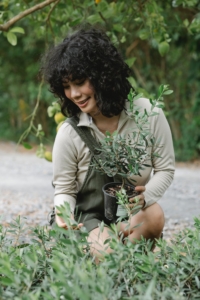
I grow cannabis outdoors in my garden every year. I don’t do anything to it. I don’t even fertilize. I could if I wanted a bigger harvest. But putting a seed or a clone in the ground and going to visit it every day, watching it grow is inspiring. Then there’s the satisfaction of using one’s own medicine, which is extraordinarily empowering. It contributes to this concept of self efficacy, which is an important part of some of these transformational shifts that we talked about before. People move from a victim state of consciousness into, “I can actually take care of myself, and I can heal.” They can cost-effectively produce a year’s supply of their most important medicine. Not to mention they get probiotics from the soil, sun, and fresh air. I think the horticulture part is really powerful.
I’m glad you pointed this out. I think that there’s something important about having a direct connection with the plant material that’s used as a medicine. The harvest process can be a lot of work or it can be a methodical meditation. Take trimming, for example, if the cannabis is intended to be inhaled. Trimming takes a lot of time. But it can be a wonderful social event. It’s an opportunity to get a lung full of terpenes and delicious aromas. There’s a lot of resin that sticks to the hands. I believe that some of the THCA or CBDA and terpenes are getting absorbed directly that way. So there are therapeutic aspects throughout the whole process. Even if it’s just something you purchased taking out that flower, looking at it, smelling it, allowing our perceptual filters to open up to appreciation and gratitude, it can be a ritual. So make a ritual of it. It’s different than the way most people relate to their medications.
I often recommend to patients what I learned in my late teens and early 20’s from a Rastafarian. I also saw this in the Native American sweat lodge ceremony process with tobacco. Some of these powerful herbs are seen as a vehicle that we can impregnate with our intention. Then we allow that to expand out into the universe as it’s burned or consumed. All day long in the Native American prayer tie ritual, they put tobacco in their palm and put some intention in it, roll it up very consciously and mindfully, and then tie it. All these little bundles of prayer ties end up going into the fire. Tobacco is the vehicle for that prayer. And cannabis can similarly be used as a vehicle for intention.
Essentially, it’s an exchange. People can allow the spirit of cannabis to enter their body and live through them, and know that it might change them. It might turn them into a cannabis activist, an educator, or grower. They can let cannabis into them, and in exchange for that, they can ask for something in return. We may ask for relief, insight, strength, endurance, performance enhancement, or whatever it might be. I think having the actual flower in hand is important for that level of the relationship.
SR: You addressed some of the ways for people to connect with cannabis in ritual. How specifically does the ritualistic use of plant medicine support healing in a deeper manner?
DS: Self-empowerment is an example. We don’t need a pharmacy to dispense it. It is something that we can grow. From an evolutionary and ancestral standpoint, we have relied on plants for our health and food. Our current society is very disconnected from nature in many ways. But we can return to the understanding that this plant actually grew and evolved. People are able to harvest it, hold it in their hand, and relate to it in a very basic way. It brings us into a more whole relationship in our lives as a part of this earth. I think that’s important.
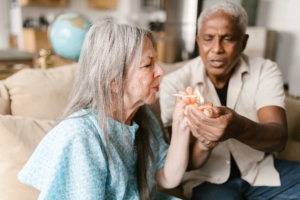 Any ritual has the capacity to shift someone’s consciousness. In my opinion, this is what rituals were designed to do. It allows people to temporarily suspend their critical thinking. Rituals tend to shift us into the feeling state, the emotional world, and the openness to something new occurring. This is basis of ritual practice in religion, spirituality, and healing modalities like hypnotherapy. One could consider a ritual as a type of trance induction. The shift in consciousness from a ritual can suspend stuck patterns that might have served us at one point in our life, but now the world has changed and they’re no longer serving us.
Any ritual has the capacity to shift someone’s consciousness. In my opinion, this is what rituals were designed to do. It allows people to temporarily suspend their critical thinking. Rituals tend to shift us into the feeling state, the emotional world, and the openness to something new occurring. This is basis of ritual practice in religion, spirituality, and healing modalities like hypnotherapy. One could consider a ritual as a type of trance induction. The shift in consciousness from a ritual can suspend stuck patterns that might have served us at one point in our life, but now the world has changed and they’re no longer serving us.
Whatever it is, we’re so often replaying old patterns. How do we suspend that long enough to enter a state of wholeness? In that state of wholeness, we can be re-patterned by our health much easier. That’s where ritual can serve a purpose. I practice a sort of ritual with cannabis. I typically break my fast with a little vaporized cannabis on Tuesday mornings. It feels incredible. I sit with the cannabis for five to 15 minutes before I inhale it, dwelling on appreciation and sometimes specific intentions – it’s a celebration. Anyone who is able to start their day like that is going to have a better day.
We could be celebrating anything: the fact that we’re above ground, that we’re breathing, the clouds, sun, or the rain. It doesn’t have to be a cannabis ritual. This is us deciding that we want to have more appreciation in our lives. And we want an aspect of our life that’s deeper than just a physical reality. It’s connecting with a part of us that may have been bottled up, shut down, or neglected for a while. Cannabis is such a great segue. The celebration of cannabis before I inhale it is itself. But then once I inhale it, I’m sitting with an incredible meditation. My body is totally still and peaceful. My mind is going wherever it wants to go. It usually goes into creative places and feelings of connection with other people, nature, and the universe. These feelings of connection are powerful for healing.
SR: Botanicals are strong allies during this time, especially. How can plant medicine help us confront recurring challenges we have, whether it is the pandemic, our environmental situation, or the current reality?
DS: Humankind has an interesting situation in our hands now. We’ve changed our environment so much and our way of relating to the Earth. This change has been way more rapid than we’ve ever seen in our evolutionary history. We’re at a point where most people at some point in their lives need to rely on tools to help them stay healthy, prevent disease, and to address illness when it occurs. It’s not fully possible for many people to experience a healthy and fully functional life without some help. I don’t like to speak in absolutes. I think there are ways to use non-medical, non-botanical approaches to be at our best. But it’s getting more and more challenging. In herbal medicine, there’s the concept of an adaptogen. It is something that could be used to prevent disease or promote our resilience to stress.
Stress is helpful like symptoms are helpful. It’s our response to stress that changes everything. It changes into either distress, which is the type of stress that we’re having a hard time using to grow, change, or heal. And then there’s eustress, the type of stress that actually serves us. It helps us change in positive ways. The difference between distress and eustress is primarily driven by our perception of the stressor. When we see situations as one-sided, view ourselves as a victim, or become overwhelmed, that’s distress. When we have self-efficacy and the resources we need to channel that stress into something that’s transformational and helpful for us, it’s eustress.
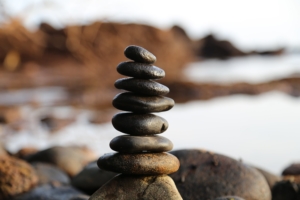 Cannabis and these other adaptogenic herbs and modalities help us be in a position when stress occurs, because it always does, to make the perceptual shift that allows it to become a type of stress that’s going to be beneficial for us. If we look at some of the primary challenges in our environment right now and then the therapeutic activities of cannabis, there’s an incredible alignment there. Like so many things in cannabis, it seems too good to be true. Our environment is full of neurotoxins. We’re seeing a rapid increase in neurologic disorders. And then cannabis is so neuroprotective and helpful not just for the symptoms of these neurologic disorders, but often the underlying pathology.
Cannabis and these other adaptogenic herbs and modalities help us be in a position when stress occurs, because it always does, to make the perceptual shift that allows it to become a type of stress that’s going to be beneficial for us. If we look at some of the primary challenges in our environment right now and then the therapeutic activities of cannabis, there’s an incredible alignment there. Like so many things in cannabis, it seems too good to be true. Our environment is full of neurotoxins. We’re seeing a rapid increase in neurologic disorders. And then cannabis is so neuroprotective and helpful not just for the symptoms of these neurologic disorders, but often the underlying pathology.
We have a lot of isolation and fear in our society right now. These are things that aren’t just bothersome, they’re leading to suicide, drug abuse and overdose, and relationships falling apart. Isolation is associated with cardiac disease and all sorts of mental illnesses. So this is a real problem. We look at cannabis and it tends to promote social connectivity, the opposite of isolation.
We have a lot of inflammatory conditions in our world right now. Most of the most common chronic conditions have an inflammatory component. Again, we look at cannabis with a plethora of anti-inflammatory compounds, which are in many cases, more effective and safer than the anti-inflammatories in the pharmacy or even in other plants. Cannabis is an ideal adaptogen at the individual level. People can use cannabis to stay healthy, prevent disease, and to perform at their best.
I also think cannabis is an adaptogen at the social level and maybe even at the global level. If you look at cannabis-endorsing social groups, they tend to have different value structures than other substance-using groups. Cannabis-endorsing social groups tend to be more mutualistic, altruistic, open to diversity, and likely to stay connected in meaningful ways. At least that’s been my experience and what I’ve heard from many others and also shows up in the scientific literature.
We can also see cannabis working at the environmental level. We don’t have to keep cutting down trees and drilling for oil. We have a renewable resource in cannabis that can replace a lot of the harmful practices our species is unfortunately accelerating at this time. Harmful practices to the Earth directly impact our individual health, so it’s reciprocal. If we could see hemp being utilized more, I think we would create an environment where we could have an easier time thriving with our individual health. Cannabis may also act as an adaptogen at a policy-making, governmental level. I suspect if we saw more of our leaders embracing cannabis in their own lives, their activities in their leadership roles might be a bit different.
I certainly think the same is true with psychedelics. We’re coming to a head in our relationship with each other and with the Earth right now. Things are getting pretty desperate for change. We’re back to where we started this conversation, with symptoms. We can suppress symptoms or we can embrace them and allow them to be a catalyst for change. We’ve been bottling up and suppressing things as a species for a long time. Now boiling over. We are seeing a desperate end-of-life in a dysfunctional way of relating to Each and each other. We’ve been here before. Every huge civilization that’s expanded and overgrown beyond a capacity to sustain itself with its available resources eventually fails. What we’re seeing differently this time is that it’s happening at a global level. There are incredible alternatives that already exist and they are expanding rapidly.
SR: In this vein, what are some other entheogenic medicines that you see being potentially beneficial for our current times?
DS: Ketamine is becoming a bigger part of my practice. That’s mostly because it’s legal status in the United States, but also because it’s very versatile. It’s a pharmaceutical that comes from the lab, and surprising to me that someone with my background and interest in plant medicine is getting so excited about ketamine as a therapeutic agent. But it’s very analogous to cannabis. What I’ve learned from cannabis is helping me work with ketamine. It’s analgesic. It’s an entheogen. It can be used at low and high doses. It works topically. There are so many parallels with cannabis. And ketamine is available and incredibly inexpensive. I’ve seen profound shifts using ketamine in patients that have only partially responded to cannabis.
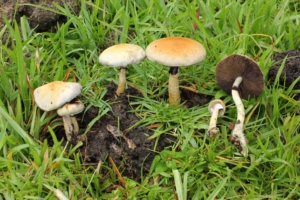 Psilocybin is also very powerful. It’s a medicine that I have a personal relationship with, and that I’ve also seen work wonders with patients. It supports these pivotal, transformational psychedelic type experiences. But it can also be used in very low doses for cluster headache, chronic migraine, chronic pain, or even anxiety. What most people define as microdoses of mushrooms are still at the level where they can create a mild psychoactive effect that share some of the benefits described earlier about cannabis. Certainly at higher doses, psilocybin can be very therapeutic and transformational, in the right setting.
Psilocybin is also very powerful. It’s a medicine that I have a personal relationship with, and that I’ve also seen work wonders with patients. It supports these pivotal, transformational psychedelic type experiences. But it can also be used in very low doses for cluster headache, chronic migraine, chronic pain, or even anxiety. What most people define as microdoses of mushrooms are still at the level where they can create a mild psychoactive effect that share some of the benefits described earlier about cannabis. Certainly at higher doses, psilocybin can be very therapeutic and transformational, in the right setting.
Those are the two I’m talking with patients about the most. In the case of psilocybin, I’m not able to prescribe it or administer it. But I certainly suggest and recommend it, follow up with patients who use it, and learn from their experiences. For cannabis clinicians with a DEA license that haven’t ever prescribed off-label ketamine from a compounding pharmacy, I strongly encourage you to consider adding this therapeutic tool to your practice. The safety profile is well known. It’s very versatile. I’d be happy to direct people to resources or personally mentor them in getting, like my mentor did with me.
SR: Last question, what are some areas of research that you feel deserve more consideration?
DS: There are a lot! Everything relating to cannabis for health promotion and disease prevention. There’s some research which I covered in my module that is looking at outcomes of cannabis users versus non-users and evaluating for trends. Are they less likely to die from a heart attack or a stroke? Are they less likely to have diabetes or obesity? That research hasn’t asked how we can best use cannabis to promote health and prevent disease. We’ve seen some signals that it has the capacity to do this. But we’re in the infancy of our understanding of how to use it for that purpose.
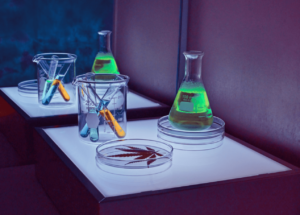
What does cannabis look like as an adaptogen? How can we use it that way? I would love to see some prospective research on that, but it’s hard to do. I don’t exactly have the study designs in mind. But in general, shifting our resources to emphasize preventing disease is going to help us have a healthier and happier population compared to right now. There is a disproportional investment in disease management once it already occurs. Then there’s an even more disproportionate investment in end-of-life care when people are already too far gone. We’re spending thousands of dollars per day keeping people alive in the ICU for weeks. Some of those resources could be shifted to what we can do to keep people healthy.
What does preventative medicine look like right now in mainstream medicine? It looks like statins and vaccines primarily. I think we do give some lip service to people needing to exercise more or change their diet. Lifestyle modification and non-pharmacological treatments are gradually making their way into the mainstream because the evidence is so strong, but the incentives built into the healthcare system and their impact on clinical practice don’t support the type of therapeutic relationship often needed to implement these disease-preventing and life-enhancing modalities.
I would love to see more research on how we use cannabis and other plant medicines to stay healthy. And, in regards to cannabis particularly, there’s been a lot of research on the decarboxylated forms of the cannabinoids. While THC and CBD are clearly important tools, I suspect that more and more research will reveal that the acidic cannabinoids are potent tools for health promotion and disease prevention. Pretty much every recent study that’s included THCA or CBDA reports something new and exciting about their therapeutic potential. We used to consider acidic cannabinoids inactive precursors. But they are extraordinarily active, highly bioavailable, and diverse in their physiologic activities compared to their neutral counterparts. I would love to see more research on this topic, and thankfully it is gaining interest and momentum.
Further Learning
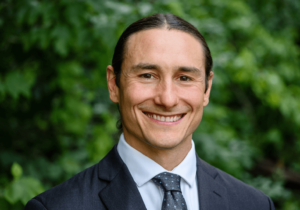 Dr. Sulak is an internationally-renowned expert in medical cannabis, the founder of Integr8 Health and Healer, a medical cannabis education resource. He is a passionate teacher of clinicians, patients and industry professionals. He sits on the board of directors of The Society of Cannabis Clinicians. Dr. Sulak recently published the first foundational text on the clinical use of cannabis and cannabinoid therapies, Handbook of Cannabis for Clinicians: Principles and Practice.
Dr. Sulak is an internationally-renowned expert in medical cannabis, the founder of Integr8 Health and Healer, a medical cannabis education resource. He is a passionate teacher of clinicians, patients and industry professionals. He sits on the board of directors of The Society of Cannabis Clinicians. Dr. Sulak recently published the first foundational text on the clinical use of cannabis and cannabinoid therapies, Handbook of Cannabis for Clinicians: Principles and Practice.
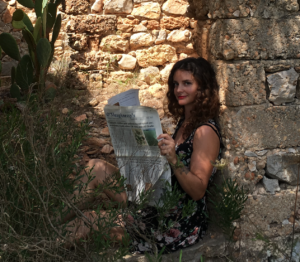 Sarah Russo is the Creative Director for the Society of Cannabis Clinicians. She got her degree in Environmental Studies and Social Justice, with a focus on botanical medicine from the Evergreen State College. She is a freelance writer, organizer, consultant, and digital creative with over 13 years of experience in the cannabis and herbal medicine space. She is also the founder of Herbs for the Apocalypse, a graphic novel and passion project aimed at deepening our connection to plant medicine and forging resistance and resilience in trying times.
Sarah Russo is the Creative Director for the Society of Cannabis Clinicians. She got her degree in Environmental Studies and Social Justice, with a focus on botanical medicine from the Evergreen State College. She is a freelance writer, organizer, consultant, and digital creative with over 13 years of experience in the cannabis and herbal medicine space. She is also the founder of Herbs for the Apocalypse, a graphic novel and passion project aimed at deepening our connection to plant medicine and forging resistance and resilience in trying times.

